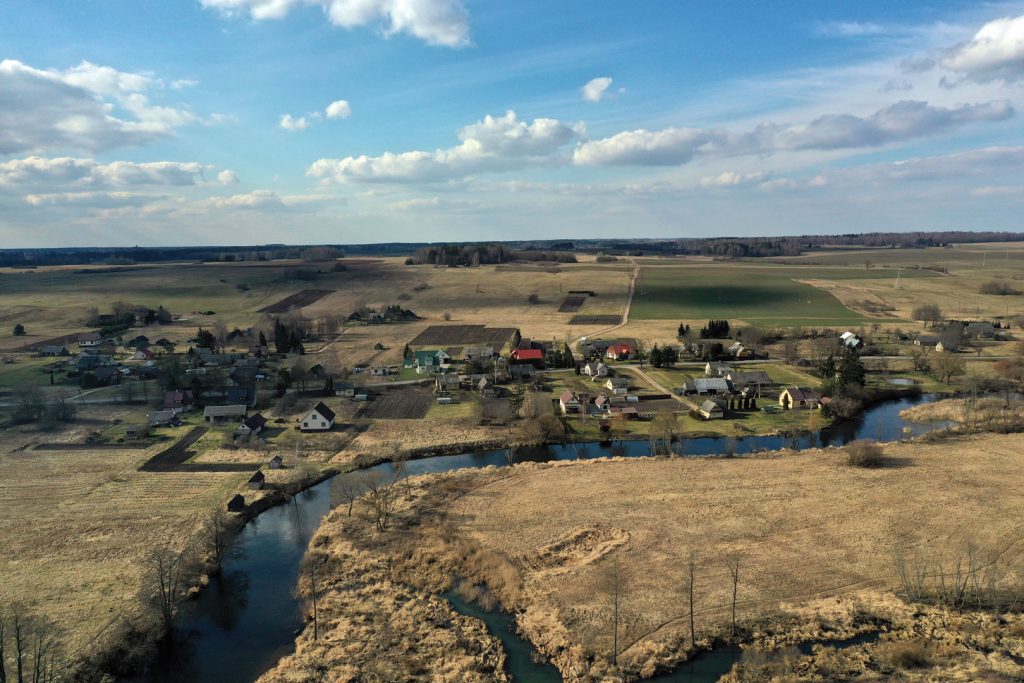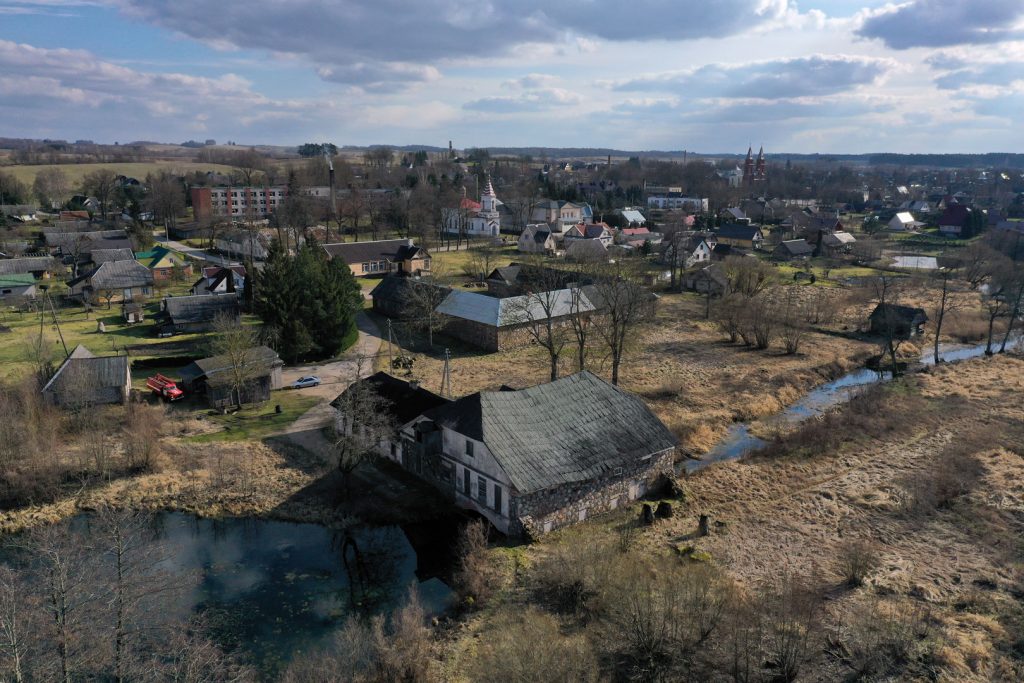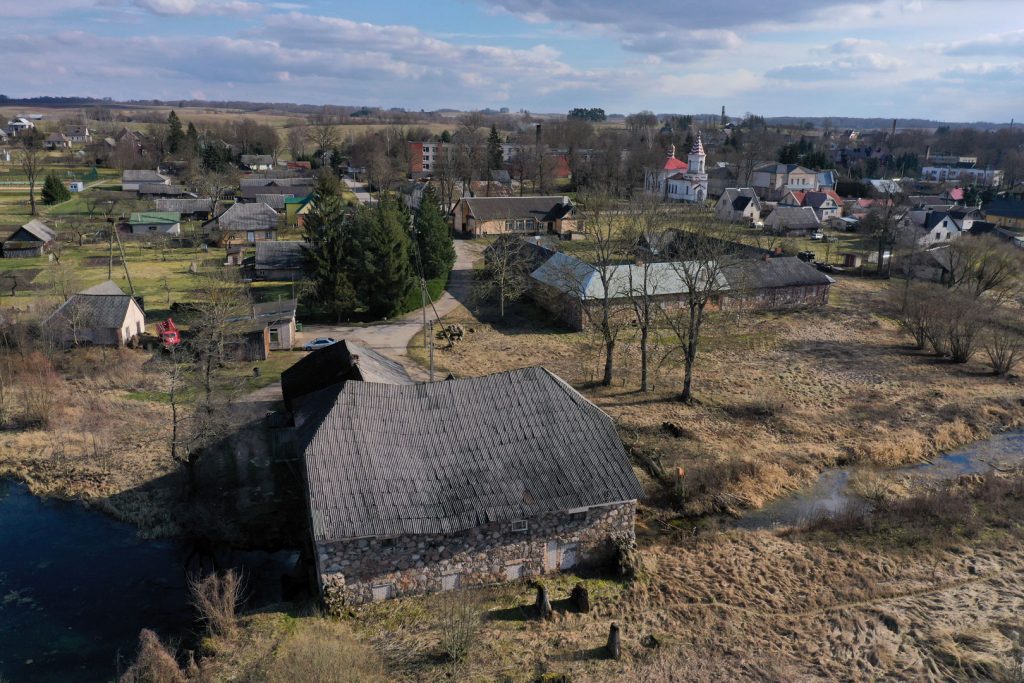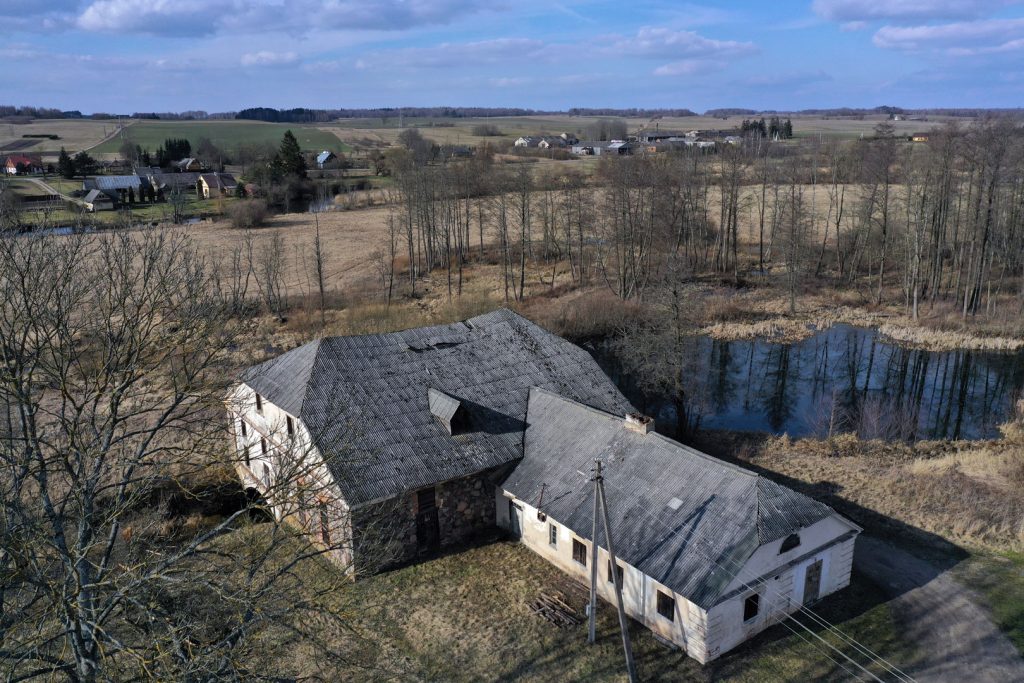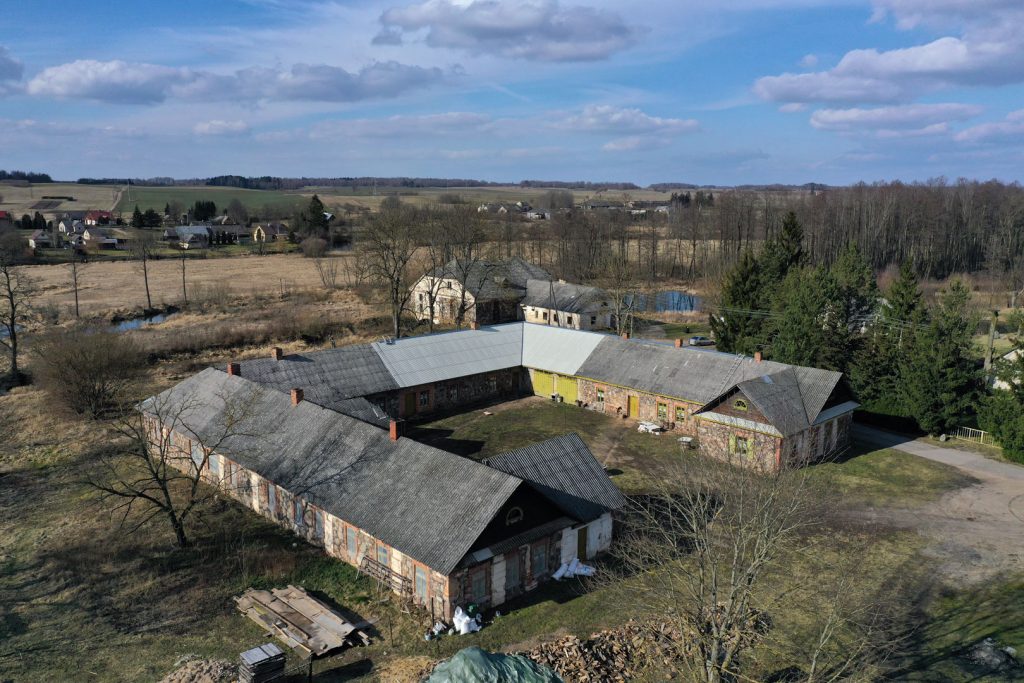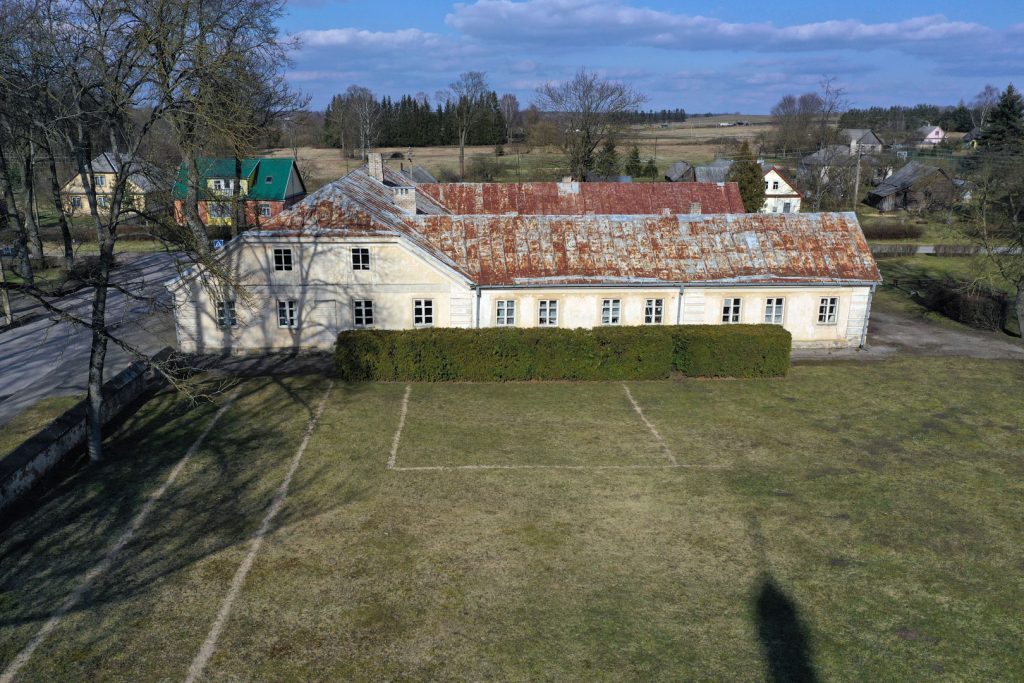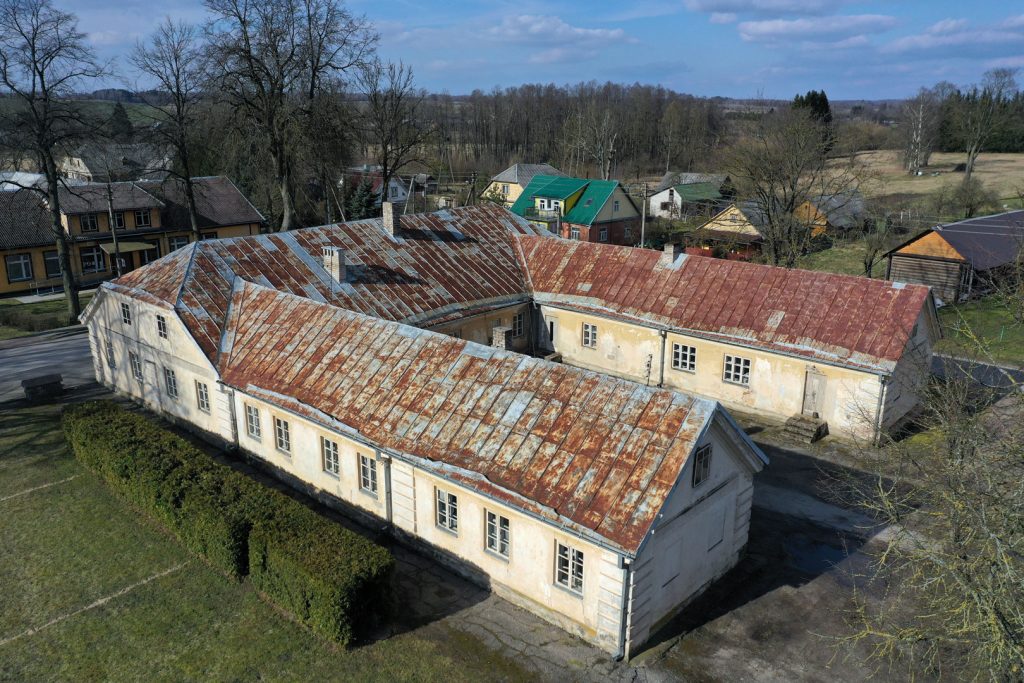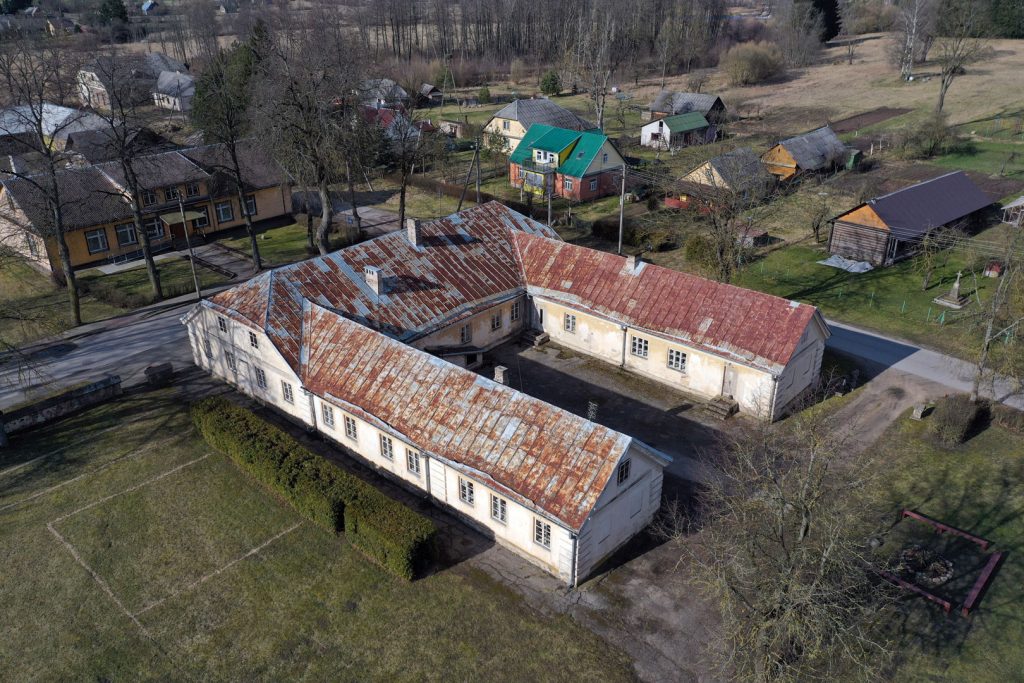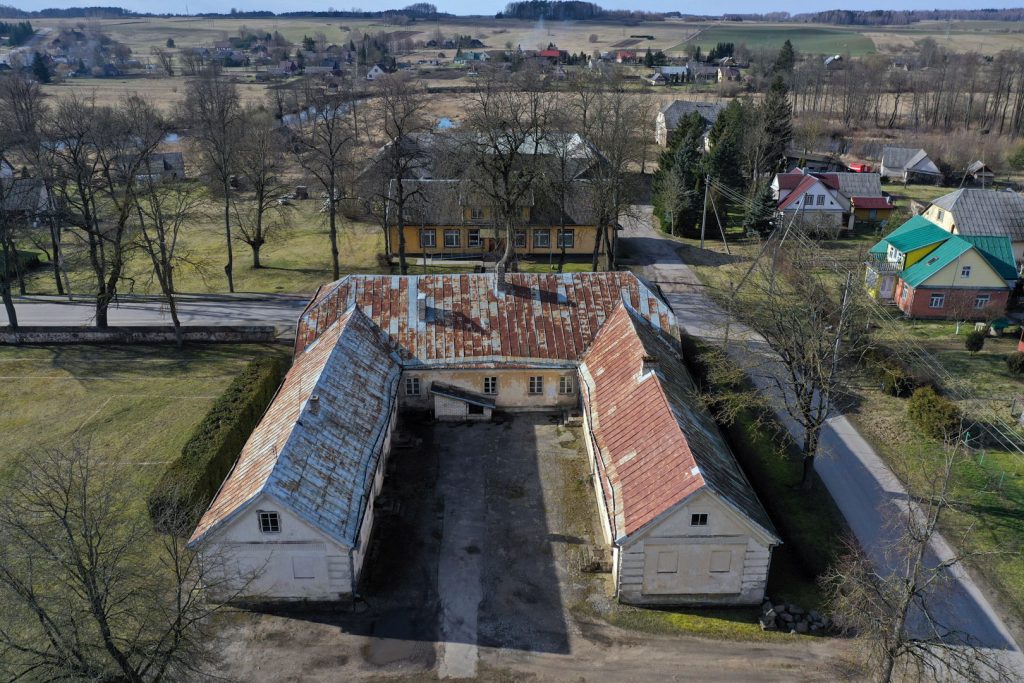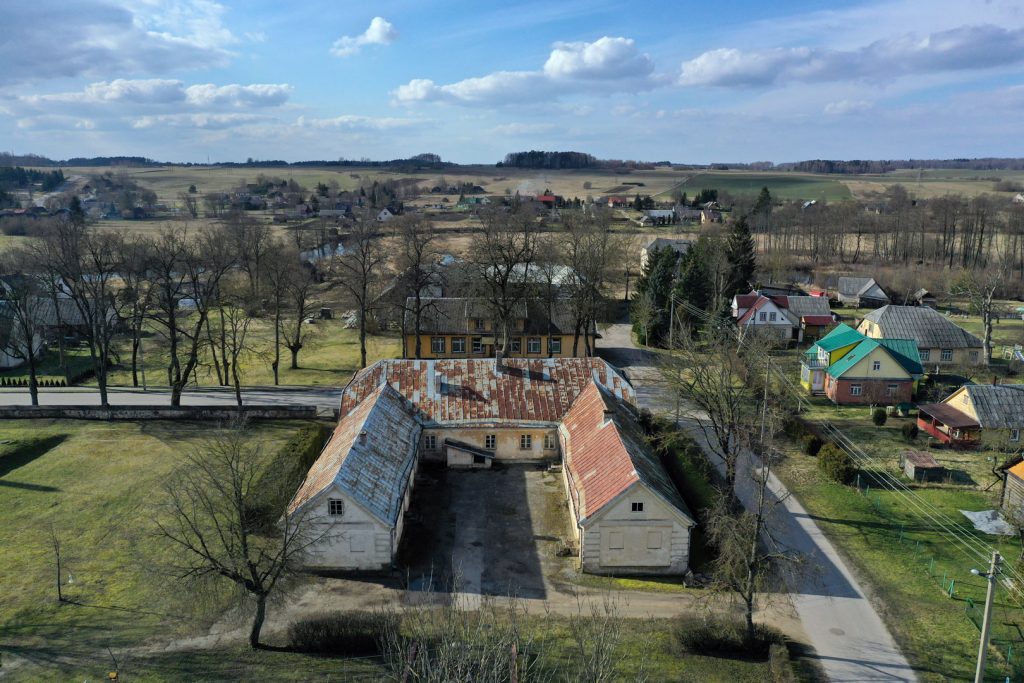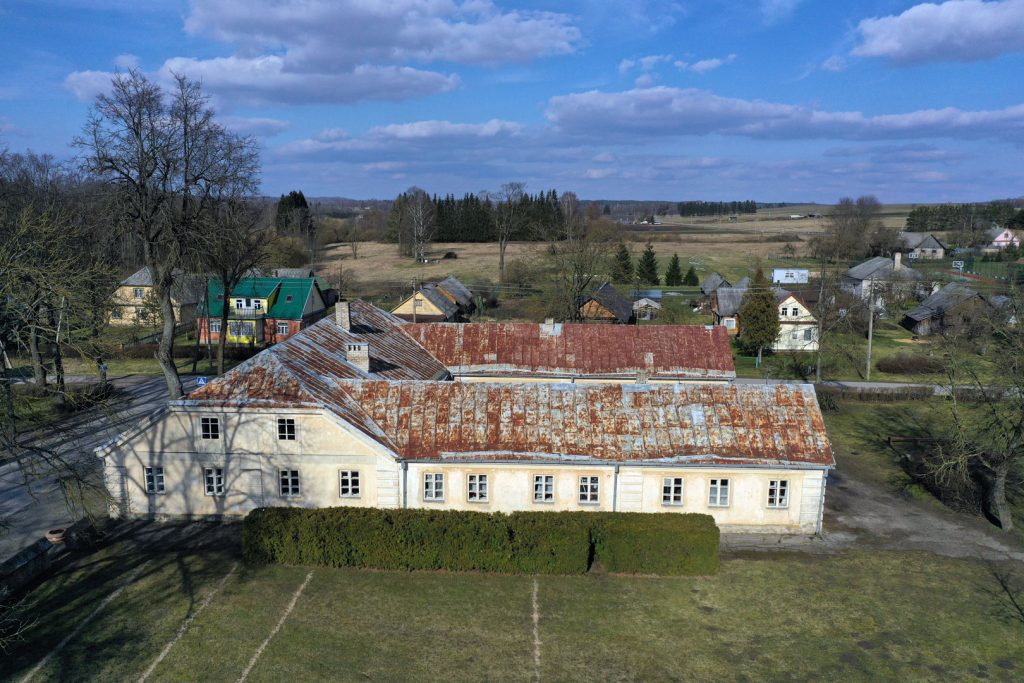Užpaliai manor
The manor, next to which a township evolved, in the times of the Grand Duchy of Lithuania (LDK) was known as being royal. At the end of the XIVc. the representative of Užpaliai manor was Astikas, later his descendants: Radvila Astikas (1442-1477), Mikalojus Radvilavičius (1478-1510), Georgijus Astikavičius (1510-1511), Stanislovas Astikavičius. After them Mikalojus Radvila (since 1519), Stanislovas Radvila (since 1522), Šimkus Mackevičius (1532-1541), Vaitiekus Junzila (since 1542), Povilas Giedraitis (1545-1552), Vaitiekus Jasinskas (1553-1563), Mikalojus Naruševičius (1567-1574); still later the Sapiegos family, children of the Radvilos. Every spring Užpaliai manor had to make accounts with LDK court. Užpaliai inhabitants were workers of the duke’s manor, so they worked easier than in other manors and lived quite well. During the times of Žygimantas Augustas the land was started to be divided into voloks, and inhabitants settled in villages. In 1789 there lived 25 inhabitants in the manor. Before the last division of Lithuania, the manor was started to be sold as the treasury of the state was empty. Užpaliai manor was purchased by Pranciškus Sapiega. He owned Užpaliai manor till 1831 until during the rebellion it was expropriated by Russians. The land of the manor was given to people and its center was supervised by administrators. In 1836 a water mill was built in Užpaliai. Serfdom was abolished in Užpaliai manor earlier than in other manors. In the place of the manor there have survived the palace (XIXc.), the water mill, a pavilion (oficina) (1808), which are architectural monuments of local importance.
In 1663 the census of Užpaliai neighborhood and the manor were drawn up. Going from the town there was a large palace with two parlors and side chambers. After crossing the yard there was another, administrative, palace, nearby, a big deteriorating house from pressed clay. Next to them, the gate, above which the attic; next to them, a ruined house, a stone cellar, a bathhouse, a doghouse, a stable, a brewery next to the river where there was a room for making vinegar and mead. Going to the estate, there was a new gate covered with shingles, next to it, stables, a shed for hay. Next to the Šventoji there was an estate. There were two new sheds, on the left side, barns, near the river, two granaries and a threshing-floor barn; in front of the gate, a bakery and a creamery with a dairy. In the XVIIIc., in 1705, A. Naruševičius, while transferring Užpaliai to Kazimieras Dominykas Oginskis, made an inventory of the manor, where the buildings of the manor are not recorded. In 1489 inventory manor’s subjects’ obligations are recorded: payments, travelling to substations, even to Riga, trading with other manors, night sentry and others. In 1792, when Užpaliai was granted municipal rights by Stanislovas Augustas, it started to behave like a free town. Then coat of arms was granted too. In 1796, by the decree of the Tsar, Užpaliai was donated to Juozapas Poniatovskis, who sold it to Pranciškus Sapiega, who started to build new buildings in the manor in 1802. In 1808 barns were built. In 1809 in the inventory of the manor that belonged to Pranciškus Sapiega, it is recorded that the palace had been struck by lightning and burnt down. In 1804 a new palace, facing the Šventoji, was built from red bricks. The outside was decorated with pilasters, the roof was covered with tiles, with cornices, with two chimneys. In the inventory of 1833, which was drawn up after confiscation of the manor from the participant of the rebellion Eustachijus Sapiega, a U-shaped building is mentioned. The steward of the manor did not live there any longer. In July, 1809 masonry works were completed. Bricks and tiles were made on site. Besides the dwelling house, a big barn (oficina) is mentioned, which was built of stone, with pilasters, cornices, turrets, with two flats at ends of the annexes. Later this big barn was called a building of the estate. In 1809 behind the new brick big barn there was a mill built of lumber wood, covered with straw. The new stone mill was built later, in 1836, when the administrator was J. Ptakas. In 1851 the mill was damaged by a flood. The remaining current mill was rebuilt in 1877 by a resident of Ukmergė Anupras Kosarskis. In 1809 there were also mentioned: a brewery built in 1804, a threshing-floor barn, a wooden big barn, an old house, a lime kiln and another one for burning bricks and tiles. Sapiega built a brick icehouse, barns, a storehouse, 2 threshing-floor barns, dug a well. At the expense of the manor in his fields there was a graveyard fenced with a brick fence. After the rebellion in 1831, the Tsarist authorities deprived the Sapiegos of the manor, and the land was divided for peasants. They were excused from serfdom. In the palace of the manor there lived: representatives of the owners, 1863-1914– clergy of the Orthodox Church, 1914-1918 – soldiers of Kaiser Germany, 1919 – the board of the valsčius, 1921-1935 – a secondary 4-grade school was established and later primary schools. After the WWI in the buildings of the manor there were also schools. In 1836 instead of a wooden building a brick one was built. After the flooding in 1851 the damaged mill was purchased by a resident of Ukmergė Anupras Kosarskis, after whom the mill was supervised by a German Holc, and in 1922 it fell into AB ,,Mazgas“ hands, from which the mill was bought by Steponas Pranckevičius. The mill still operated after the WWII and supplied Užpaliai with electricity. In 1969 it belonged to inhabitants’ household service station and later to the collective farm of Užpaliai.
Užpaliai manor’s water mill
In 1800-1831when the manor was owned by Pranciškus Sapiega, a mill was built of lumber wood, covered with straw. The new stone water mill was built in 1836, when the administrator was J. Ptakas. About 300 meters of the mill, on the river Šventoji a wooden dam was erected (1835). From it there was a canal dug out by serfs, its bottom was paved with stones and through it water got to the building of the mill.
In the inventory of Užpaliai manor of 1847 the mill is also recorded. There were three pairs of millstones and a fulling-mill estimated at 3 000 roubles. In 1851 flooding damaged the building and equipment; it was estimated that the restoration of the mill would cost 9500 roubles. In 1875 the mill was purchased by a former clerical worker Michailas Lebedevas who sold the mill after a year to a resident of Ukmergė Anupras Kosarskis, who restored the mill in 1877. According to A. Kosarskis, the reconstruction of the mill together with the dam, repairs of the canal and equipment cost more than 20000 roubles. In 1929 the mill was bought by Steponas Pranckevičius who owned it till the WWII; he built concrete dam supports. The mill worked till 1969 and belonged to inhabitants’ household service station; in the former miller’s flat lived the last miller’s, Kuzma’s, family. The mill is of composite volume, angular „L” letter plan, consists of production unit and a house. The walls of the mill are of various constructions, made of stone and red bricks, plastered in patches; overlays are wooden, roofs semi-circular and double-sided, covered with slate. The production unit is two-storey with an attic; its plan is square, in the middle divided in two by a lengthwise load bearing wall; the floor is of wooden boards. In the eastern part two wooden staircases are installed which lead upstairs where there used to be four millstones, rolls and a grain gritter. Before the WWII workers did various jobs in the mill: ground grain, produced grits, rolled, pounded fabrics, turned various metal details, cut and planed boards, made shingles; after the war the mill was used only for grinding and rolling. In the attic which was used for storing, there was a lifting device with an enormous wooden wheel. The western part of the production unit rises above the water, with its wide arch covering the canal and with its end wall resting on its western bank; under the floor of the first floor two turbines are installed. The second unit, the dwelling one, is narrower and a little lower, of one storey with a small basement; it adjoins the eastern side of the production unit. The planning of the house is two-rowed: rooms are passable through, arranged on both sides of the load bearing wall; there are two doors: on the side southern and end eastern facades. In the house there was a wool carding room and a flat; next to the southern hallway a chimney was made of bricks – the manor’s smokehouse and a kitchen with an old stove; the second kitchen was installed in the eastern end. The floors of the rooms in the house are of wooden boards, while those in the hallway, smokehouse and storeroom next to the kitchen, of pressed clay. The door cut in the western wall of the hallway connects the house with the production unit. In the exterior there dominates the production unit of monumental volume. The most original are the end northern and southern facades where stonework is matched to whitely plastered planes. The corners of the facades are marked with stone blades, the top is decorated with wide trapezoid pediments, and the socle is enlivened by segmental arches that over-cover the canal and are made of red bricks; high rectangular openings are decorated with rims of red bricks with a heightened upper part. On the plastered side of the southern facade the small rectangular windows are arranged at two levels. On the northern facade (on the stone of the socle of the production unit) there is an inscription with a date: R 1836. The unit of the dwelling part is plastered, its corners are marked with rusty pilasters, the attic is surrounded with a profiled cornice; small rectangular windows are framed with plastered rims with windowsills. The end east facade is of symmetrical composition, divided in the middle by a patterned pilaster; the top is decorated with a wide trapezoid pediment where a small semicircular window is built in, surrounded with plastered rims. With the help of different materials and volumes two different functional zones are emphasized in the exterior of the mill. This is what makes the building original.
